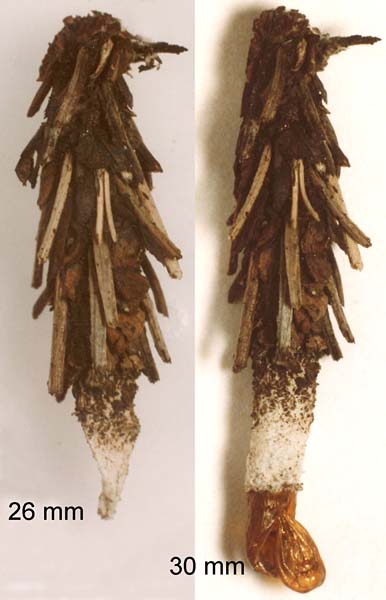Acanthopsyche atra

11.016 BF191
Acanthopsyche atra
(Linnaeus, 1767)
Wingspan of male 16-22 mm. Female wingless.
There is a marked sexual difference between the adults. The male has translucent wings covered with grey hair scales, large bipectinate antennae and a hairy body. The yellow female has vestigial antennae and legs, no wings, a brown head, a large rectangular brown dorsal sclerite on thoracic segments T1 and T2 and a narrow medial brown dorsal sclerite on T3.
The larva lives in a silk case about 20 mm long, and covered in longitudinally arranged grass-stems and heather fragments, which are individually considerably shorter than the case. The long-lived, often for two years, larva usually stays on or near the ground, rarely climbing up plants. It feeds on grasses and low plants, often heather (Calluna).
The case is especially prominent when fixed for pupation in April-early June on a wall, rock or fence exposed to the Sun. Shortly before and during pupation, the male case can be recognised by its posterior extension (about 6 mm) of a grey silk sleeve, devoid of plant fragments. After emergence, the pupal exuviae fills and protrudes from the sleeve.
The adults emerge in May and June, the male flying in the afternoon and evening.
In Britain, the species is found on heaths and moors in the Scottish Highlands, North Wales, the Pennines, Cumbria and Dorset-Hants.-Berks.

 UKMoths
UKMoths 



